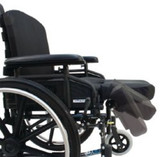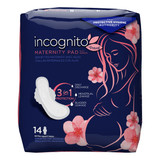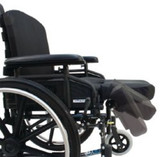Pros and Cons of Disposable Diapers

The debate between disposable and cloth diapers is a common topic among new parents. Each option has its advocates, with some parents swearing by the convenience of disposable diapers while others champion the eco-friendliness of cloth alternatives.
Understanding the pros and cons of each choice can help you make an informed decision that aligns with your lifestyle and parenting needs. This article aims to provide a comprehensive overview of disposable diapers, highlighting their benefits and drawbacks to aid you in your decision-making process.
Understanding Disposable Diapers
Disposable diapers have become a staple for many parents due to their convenience and efficiency. To make an informed choice, understanding how they work and the different types available is essential.
Definition and Function
Disposable diapers are single-use, absorbent garments designed to manage a baby's waste efficiently. They typically consist of three layers:
- Top Layer: This is the inner layer that comes into contact with the baby's skin. It is usually made from soft, non-woven fabric to keep the baby comfortable.
- Absorbent Core: The middle layer contains absorbent materials such as superabsorbent polymers (SAP) and fluff pulp. These materials effectively lock in moisture, keeping the baby dry and reducing the risk of diaper rash.
- Outer Layer: The outermost layer is waterproof to prevent leaks. It is often made from polyethylene or polypropylene.
Types of Disposable Diapers
Several types of disposable diapers cater to different needs and preferences:
- Standard Disposable Diapers: These are the most commonly used type, offering good absorbency and ease of use.
- Eco-Friendly Options: For environmentally conscious parents, eco-friendly disposable diapers are made with sustainable materials like bamboo fibers and offer biodegradable components. Brands such as Seventh Generation and Honest Company provide these options.
- Hypoallergenic Diapers: Designed for babies with sensitive skin, hypoallergenic diapers are free from harsh chemicals, fragrances, and dyes. Examples include Pampers Pure Protection and Huggies Special Delivery.
- Nighttime Diapers: These are designed with extra absorbency to last through the night without needing frequent changes.
Understanding these aspects can help you choose the right type of disposable diaper based on your baby's needs and your lifestyle.
Pros of Using Disposable Diapers
Convenience
The convenience of disposable diapers is a significant factor for many parents. Disposable diapers are designed for ease of use, allowing quick changes without the need for washing or cleaning. This feature is particularly beneficial for parents with busy schedules or those who travel frequently. The ability to dispose of used diapers immediately makes them suitable for on-the-go lifestyles, offering a hassle-free diapering solution.
Sanitary Benefits
One-time use reduces bacteria exposure, resulting in lower risk of diaper rashes compared to cloth options. Disposable diapers are designed to be discarded after a single use, which helps maintain hygiene and minimize exposure to potential irritants. This single-use nature means that bacteria and moisture are less likely to linger, contributing to a healthier skin environment for your baby.
Absorbency
In terms of absorbency, disposable diapers often outperform their cloth counterparts. They are engineered with multiple layers and superabsorbent polymers that can hold significant amounts of liquid. This high absorbency level means fewer changes are required—typically every 3-4 hours—compared to cloth diapers, which may need more frequent changing due to their limited absorbent capacity.
The combination of convenience, sanitary benefits, and superior absorbency makes disposable diapers an attractive option for many parents.
Cost Considerations for Short-Term Use
Initial Affordability Compared to Cloth Diapers
Disposable diapers offer significant cost advantages initially. The upfront costs of disposable diapers are generally lower compared to cloth diapers, which require a substantial initial investment in reusable supplies such as the diapers themselves, washing accessories, and potentially a specialized washing machine. This makes disposable diapers a more budget-friendly option for many parents who may not have the means to invest heavily right away.
Situations Where Short-Term Use is More Practical
There are scenarios where using disposable diapers on a short-term basis is more practical and economical:
- Traveling: When you're on the go, disposable diapers provide unmatched convenience. They eliminate the need for carrying soiled cloth diapers and worrying about laundry.
- Daycare: Many daycare facilities prefer or even require disposable diapers because they are easier to manage and dispose of.
- Newborn Stage: During the early months when frequent diaper changes are needed, disposables can reduce laundry workload significantly.
- Emergencies: In situations where access to washing facilities is limited or during power outages, disposable diapers serve as a reliable backup.
Considering these factors, many parents find that integrating disposable diapers for specific situations can be a smart strategy both financially and logistically.
Availability and Variety in the Market
Parents have a wide range of options when it comes to disposable diapers. These diapers come in various sizes, from newborn to toddler, ensuring that you can find the right fit for your baby at every stage of growth. Popular brands like Pampers, Huggies, and Luvs offer multiple size options and styles to cater to different needs.
Brand options for disposable diapers
- Pampers: Known for their softness and absorbency, Pampers offers various lines such as Swaddlers for newborns and Cruisers for active babies.
- Huggies: Renowned for their snug fit and leak protection, Huggies provides options like Little Snugglers for sensitive skin.
- Luvs: Offering budget-friendly choices without compromising on quality, Luvs is a go-to option for many parents.
In addition to these mainstream brands, there are eco-friendly options such as Seventh Generation and Earth's Best that focus on using sustainable materials and minimizing environmental impact.
Accessibility
Another significant advantage is accessibility. Disposable diapers are widely available in supermarkets, drugstores, big-box retailers, and online platforms. This ensures that parents in various regions have easy access to a consistent supply of diapers. Many stores also offer subscription services where you can have diapers delivered regularly, adding an extra layer of convenience.
This broad availability and variety make disposable diapers a practical choice for many families, allowing them to select products that best meet their baby's needs while fitting within their budget.
Cons of Using Disposable Diapers
Environmental Impact
The environmental impact of disposable diapers is a major concern. Each year, millions of disposable diapers end up in landfills. These diapers take hundreds of years to decompose, with estimates suggesting a single diaper can take up to 500 years. According to the Environmental Protection Agency (EPA), disposable diapers are the third largest consumer item in landfills, contributing approximately 3.5 million tons of waste annually in the United States alone.
Some key environmental statistics include:
- An average baby will use around 2,500 to 3,000 disposable diapers in their first year.
- Approximately 20 billion disposable diapers are added to U.S. landfills each year.
- The production process itself is resource-intensive, requiring significant amounts of water, energy, and raw materials like crude oil and wood pulp.
Eco-friendly options do exist but often come at a higher cost and may still contribute to landfill waste if not properly composted or disposed of.
Long-Term Cost Analysis
While disposable diapers might seem affordable at first glance, the long-term cost analysis reveals a different story. On average, parents can expect to spend around $2,700 per year on disposable diapers. This figure includes the cost of purchasing diapers regularly and any additional related expenses like diaper pail liners and wipes.
Breaking down annual costs:
- Daily usage: Around 7-8 diapers per day for infants.
- Monthly costs: Approximately $225 per month on average-priced brands.
- Yearly expenditure: $2,700 annually.
Over the span of three years (the typical duration a child uses diapers), families might spend upwards of $8,100 solely on disposable diapers. This financial impact can be burdensome for many households, leading some parents to consider cloth diapering as a more sustainable long-term investment despite its higher initial cost.
Balancing convenience with environmental responsibility and long-term financial planning becomes crucial for parents when deciding between disposable and cloth diaper options.
Skin Reactions and Leakage Issues with Disposable Diapers
Skin reactions caused by disposable diapers can be a significant concern for parents. Some brands may include potential irritants such as fragrances, dyes, or chemicals that can lead to skin rashes or allergic reactions. Babies' skin is highly sensitive, and exposure to these substances might cause redness, inflammation, or discomfort. Parents should look for hypoallergenic options or those labeled as free from harmful chemicals to mitigate these risks.
Leakage issues with disposable diapers are also common and often result from improper fit or timing. Here are some frequent causes and tips to minimize leakage occurrences:
- Improper Fit: Ensure the diaper size matches your baby’s weight and body shape. A too-loose diaper can lead to gaps where leaks occur, while a too-tight diaper may not provide adequate coverage.
- Timing: Changing diapers promptly is crucial. Overfilled diapers are more prone to leaks. Aim to change the diaper every 3-4 hours or sooner if it becomes soiled.
- Fastening Technique: Secure the diaper snugly but not too tight around the waist and legs. This helps create a seal that prevents leaks.
Choosing the right brand and size, along with timely changes, can significantly reduce both skin reactions and leakage problems.
Making an Informed Choice Between Disposable and Cloth Diapers
When deciding between disposable and cloth diapers, it's essential to consider your personal needs and lifestyle. Evaluate the convenience, cost implications, and environmental impact of each option. Balancing these factors can help you make an informed choice that best suits your family's unique situation. Remember, what works for one family might not work for another, so tailor your decision to your specific circumstances.
FAQs (Frequently Asked Questions)
What are disposable diapers and how do they work?
Disposable diapers are single-use products designed to absorb and contain waste. They function by utilizing absorbent materials that draw moisture away from the baby's skin, keeping them dry. Different types of disposable diapers are available, including eco-friendly options that aim to reduce environmental impact.
What are the main advantages of using disposable diapers?
The main advantages of using disposable diapers include convenience, sanitary benefits, and superior absorbency. They are easy to use and allow for quick changes, making them suitable for busy parents on-the-go. Additionally, being one-time use reduces bacteria exposure, which can lower the risk of diaper rashes compared to cloth options. Disposable diapers also typically offer better absorbency, requiring changes every 3-4 hours.
What should I consider regarding the cost of disposable diapers?
While disposable diapers may have higher upfront costs compared to cloth options, they can be budget-friendly in situations where short-term use is more practical. It's important to analyze the long-term costs as well; families using disposables regularly may spend approximately $2,700 per year.
How accessible are disposable diapers in the market?
Disposable diapers are widely available in a variety of sizes and brands at stores across different regions. This variety ensures that parents can find suitable options that meet their needs easily.
What are some disadvantages of using disposable diapers?
The disadvantages of using disposable diapers include their environmental impact and potential long-term costs. Statistics indicate that disposable diapers contribute significantly to waste generation due to their long decomposition period. Over time, families may face substantial financial burdens when relying on disposables consistently.
Are there any common issues with skin reactions or leakage in disposable diapers?
Yes, some brands of disposable diapers may contain irritants that can cause skin reactions in babies. Leakage issues can also occur due to improper fit or timing of changes. Parents can minimize these occurrences by ensuring a proper fit and changing the diaper at appropriate intervals.
Recent Posts
-
Wheelchair or Transport Chair?
Choosing between a wheelchair or transport chair requires understanding the unique features and purp …Dec 20th 2024 -
Incontinence Pads
Understanding Incontinence Pads for Effective Urinary Incontinence ManagementIncontinence pads are s …Dec 15th 2024 -
A Comprehensive Guide to Manual Wheelchairs and Transport Wheelchairs
A Comprehensive Guide to Manual Wheelchairs and Transport WheelchairsWhen navigating the world of mo …Nov 12th 2024



